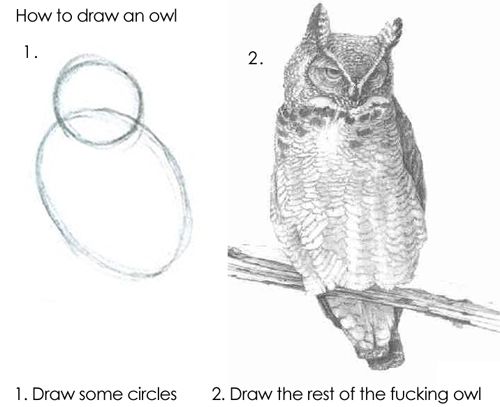How I write: Start with a Series of Sincere Sentences
An introduction to my preferred writing technique. It has helped me write blog posts, technical documentation, conference talks, and everything in between.

I enjoy writing. As a developer advocate, communicating is at the core of what I do. I write blog posts, talks, technical docs, proposals, and everything in between. My content is aimed for both external and internal audiences, and folks with varying backgrounds and levels of technical proficiency.
Being able to write productively and write well is what makes me good at my job. In this post I will share the method that helps me write - Starting with a series of sincere sentences.
I've been using this method for about a year, but what prompted me to write about it was an excellent blogpost by Swyx about his method of writing that he calls mise en place writing. The terms comes from professional chefs and describes how they prepare their stations for cooking.

The idea is that you prep everything in advance, before starting to write your article (or blog post, or chapter). I see my method as an extension of mise en place writing.
After deciding on a topic, and doing my research I start by writing a a series of short, factual sentences about the idea or ideas I want to convey in the piece I'm writing. I write as many sentences as possible, each telling a single idea or truth of what I'm trying to write, and then rearrange and reduce them until the end product emerges.
This writing technique has helped me write most types of content, including technical documentation, thought leadership blogposts, tutorials, marketing copy, talks and presentations, and everything in between.
The devil in the details 😈
Before starting to write, I often have an idea for an article or a blog post. That's my end goal. Thinking about the end goal my frst objective is to put all my knowledge and thoughts in a document, before starting to polish it.
The key is to start creating content without worrying about the details. Over-focusing on details often leads me to unfinished content, which doesn't help anyone. In the past, I would often spend a long time writing the perfect introduction, or a single chapter, before losing patience and energy (and starting my PS4 and forgetting about it).
Start with Several Sincere Sentences 📜
So, to avoid stressing about details, I instead just let my creative juices flow and write a bunch of sentences.
I stick to a few guidelines when writing the sentences:
- Once idea per sentence
Sentences must be atomic, and only express a single point. I write them one in each line. As sentences express a single idea, it will make them much easier to arrange in a narrative in a later step. The first sentences in this list are a good example of atomic sentences that express a single point each. - Sentences must be sincere
You need to agree with them. If writing technical documentation, every sentence needs to also be correct, and supported by facts. If writing an opinion piece, they need to support your narrative. - There is no upper limit of sentences
While sentences must be correct and atomic, you should write as many as you can. The order isn't important. The more you write, the more options you will have, and the easier it will be to produce the end result. - Analogies are encouraged
This is an extension to my previous point on there being no upper limit of sentences. If you can write analogous sentences supporting your idea, you should. They will give you even more options when you are crafting your final product, and let your writing be more dynamic. - Sentences must be sincere, yet counter points are encouraged
All good writing must also explore counter arguments. If there's a possibility for someone to disagree with your idea, you should accept that, just make it clear in the sentences you write which ones are exploring the counter arguments.
Following the above points, I often emerge with dozens, if not hundreds of sentences about the topic I'm planning to write about.
We are now ready to let the story rise from the chaos.
Clusters, Sections, and Chapters 📦
Once I have written what seems like enough of ideas - it's time to start clustering them. This means arranging them into a logical groups talking about the same general idea. If this seems familiar to you - it is. Every single retrospective, brainstorming, and ideation session has the same basic idea.

Once I have my clusters of sentences, each of these represents a section or chapter in the final product. Ideally, I can pick a sentence from each cluster that serves as the section title, or take bits from several sentences. I'ts also perfectly fine to reword them, whatever serves the story best.
At this point I might also look at the clusters and decide on the ordering, as it will work in the final story, and let the narrative emerge. I often also select a few sentences across all chapters that will serve as ideas to use in my introduction and conclusion. Here is why the analogous sentences help a lot - as you don't need to repeat yourself, yet still get to repeat the idea.
The final stretch 🦉
By now I often have have a clear idea of the narrative, section split, and what to want to convey in each of the sections.
This might be a good time to review the sentences in each section again, and remove what isn't necessary. Less sometimes is more, and throwing away is good and lets you focus on what's most important to the story.
Finally, all that remains is turning the sentences into actual prose. The content is there, you just need topolish and mold it into something pleasant and meaningful - by merging, tweaking, and rewriting.
Or, as the old adage goes - drawing the rest of the fucking owl.

Conclusion
Starting with a series of sincere sentences is my riff on mise en place writing method. Prepare your content, and add detail later.
I've been writing this way for over a year now, and applied it to everything I write - from technical documentation, to blog posts (including this one), and even my talks and presentations and emails. It has definitely helped me overcome writer's blocks on several occassions, and let me produce more content of higher quality.
If you found this useful, and you start using this technique, or have any remarks about it, do let me know!
Happy writing! 📝
